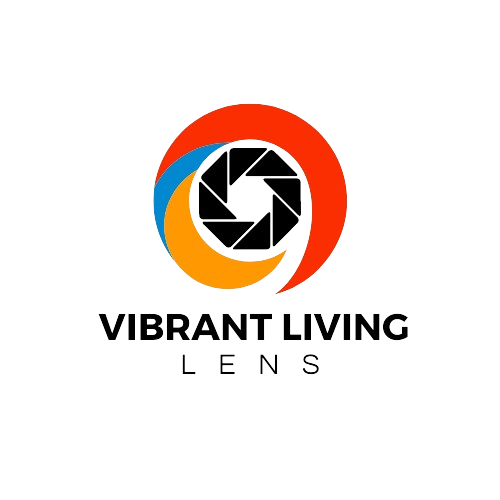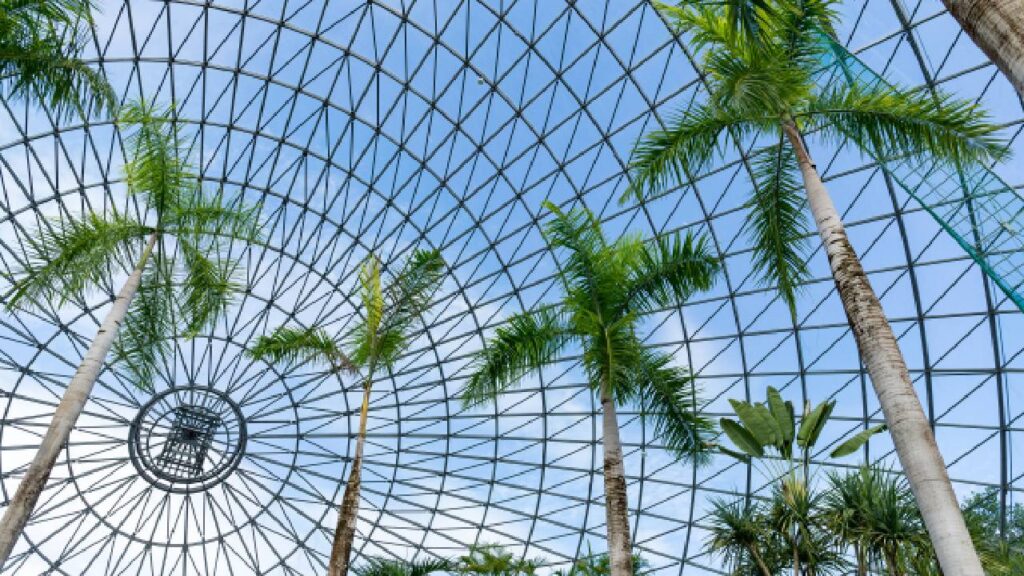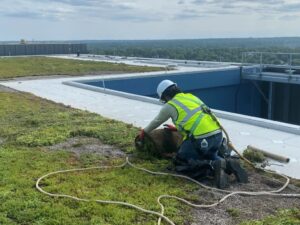Modern architecture is evolving to meet the demands of climate-conscious design, and one standout solution gaining momentum is the green roof system. As cities grow denser and temperatures rise, transforming rooftops into lush, living ecosystems provides a practical and visually striking way to enhance sustainability.
Whether you’re a property owner, architect, or builder, adopting a green roof system can reduce environmental impact, cut energy costs, and significantly elevate the value of a structure.
What is a Green Roof System?
A green roof system is an engineered rooftop layer that incorporates vegetation and growing media, installed over a waterproof membrane. It brings nature to urban spaces by covering building rooftops with a layer of greenery. These systems are not just about aesthetics—they also offer functionality, acting as insulators, natural air filters, and water management tools.
Green roofs are typically categorized into two main types:
- Extensive Green Roofs – Lightweight, low-maintenance systems that support drought-tolerant ground cover and shallow soil layers.
- Intensive Green Roofs – Heavier, garden-like systems capable of supporting a wider variety of plants, shrubs, and even trees, often accessible for use as recreational spaces.
Both systems are tailored to suit different structural needs and project goals.
How a Green Roof System Works
The design of a green roof system is multi-layered, integrating key elements that ensure performance and longevity:
- Vegetation Layer – The visible green space; plants are chosen based on the environment and load capacity.
- Growing Medium – Special soil mix that supports plant health while maintaining structural weight limits.
- Filter Fabric – Prevents soil from clogging the drainage system.
- Drainage Layer – Allows excess water to flow away from the plants and off the roof.
- Waterproof Membrane – Protects the underlying building from moisture.
- Root Barrier – Prevents roots from damaging the building’s infrastructure.
This engineered system ensures durability and functionality while supporting plant life in an otherwise non-traditional setting.
Benefits of a Green Roof System for Buildings
Implementing a green roof system comes with a wide range of tangible and long-term advantages:
Improved Air Quality: Urban air is often filled with pollutants, but green roofs naturally filter these particles, improving the air around your building. By absorbing carbon dioxide and emitting oxygen, green roofs contribute to cleaner, healthier environments.
Reduced Energy Consumption: A green roof system acts as a thermal barrier, keeping buildings cooler during hot months and reducing reliance on air conditioning. This not only saves energy but also cuts operational costs.
Enhanced Human Well-being: Access to greenery has been proven to lower stress levels and enhance mood. With a green roof, occupants of a building enjoy a stronger connection to nature—even in urban areas—which contributes to improved health and well-being.
Increased Property Value: Green roofs enhance the visual appeal of buildings, making them more attractive to tenants, investors, and potential buyers. The added functionality and eco-friendly appeal translate into higher property value.
Supports Biodiversity: Rooftop gardens can become a habitat for birds, bees, butterflies, and other small creatures—restoring ecological balance in the cityscape.
Stormwater Management: Green roof systems absorb rainfall and reduce runoff, decreasing the burden on drainage systems and lowering the risk of flooding.
Types of Green Roof Systems
Understanding the differences between green roof types helps in selecting the best fit for your project:
- Extensive Green Roof System
- Ideal for retrofitting existing structures due to its light weight
- Lower maintenance
- Generally not accessible
- Commonly used for environmental benefits over usability
- Ideal for retrofitting existing structures due to its light weight
- Intensive Green Roof System
- Requires stronger structural support due to deeper soil
- Allows for a wide variety of plants, trees, and even walking paths
- Higher installation and maintenance cost
- Often designed for public or recreational use
- Requires stronger structural support due to deeper soil
When choosing between the two, factors such as budget, purpose, and building structure must be considered.
Where Green Roof Systems Work Best
A green roof system is adaptable and can be implemented across many types of properties:
- Residential Buildings – Adds a private green space and enhances thermal insulation
- Commercial Properties – Offers employee wellness zones while reducing energy bills
- Government Facilities – Demonstrates sustainability leadership and public benefit
- Schools and Universities – Provides educational space and environmental stewardship
- Hospitals and Healthcare Facilities – Supports healing through biophilic design
BSG Landscape & Construction: Leading Green Roof System Experts in Singapore
Established in 2003, BSG Landscape & Construction Pte Ltd has become a trusted provider of green roof installation services across Singapore. Specializing in both intensive and extensive green roof systems, BSG combines technical knowledge with creative design to deliver high-performing eco-friendly solutions.
Their in-house team includes:
- Certified Arborists
- Horticulturists
- Landscape Technicians
- Workplace Safety & Health Officers
BSG has successfully handled a wide array of projects—from private residences to government institutions and tourist attractions. With a strong commitment to quality, innovation, and environmental stewardship, they provide tailored consultancy, installation, and maintenance services.
What to Expect During Green Roof Installation
Installing a green roof system involves several key phases:
- Site Evaluation – Analyze the existing roof structure for load capacity and suitability.
- Design Customization – Tailor a solution based on environmental goals, aesthetics, and budget.
- Installation – Build the necessary layers (root barrier, drainage, soil, vegetation).
- Post-Installation Care – Set up a maintenance plan to ensure plant health and system longevity.
Working with experienced professionals like BSG ensures compliance with safety standards and maximizes long-term benefits.
Why Green Roof Systems Are the Future
With rising urban temperatures, increasing energy demands, and a growing emphasis on sustainable development, green roofs are no longer just a trend—they are essential.
A well-designed green roof system:
- Reduces the urban heat island effect
- Complies with green building standards (e.g., LEED, BCA Green Mark)
- Enhances overall building performance
- Supports community wellness and sustainability goals
More developers and building owners are recognizing the return on investment not only in savings but also in positive brand perception and environmental responsibility.
Choosing the Right Green Roof Contractor
Investing in a green roof system requires choosing a skilled and reliable partner. Here’s what to look for:
- Experience with diverse green roof types
- Knowledge of local climate and plant species
- A certified and multidisciplinary team
- Proven track record and client testimonials
- Full-service offering: from design to ongoing maintenance
BSG Landscape & Construction meets all these criteria, making them one of Singapore’s top choices for green roof implementation.
Transform Your Rooftop Into a Living Landscape
Bringing nature into our buildings through a green roof system isn’t just good for the planet—it’s a powerful way to enhance the spaces where we live and work. With benefits that span health, economics, and the environment, green roofs are a win-win solution for modern urban development.
If you’re ready to turn your building into a green oasis, connect with trusted experts like BSG Landscape & Construction Pte Ltd to explore tailored solutions that meet your vision and sustainability goals.




